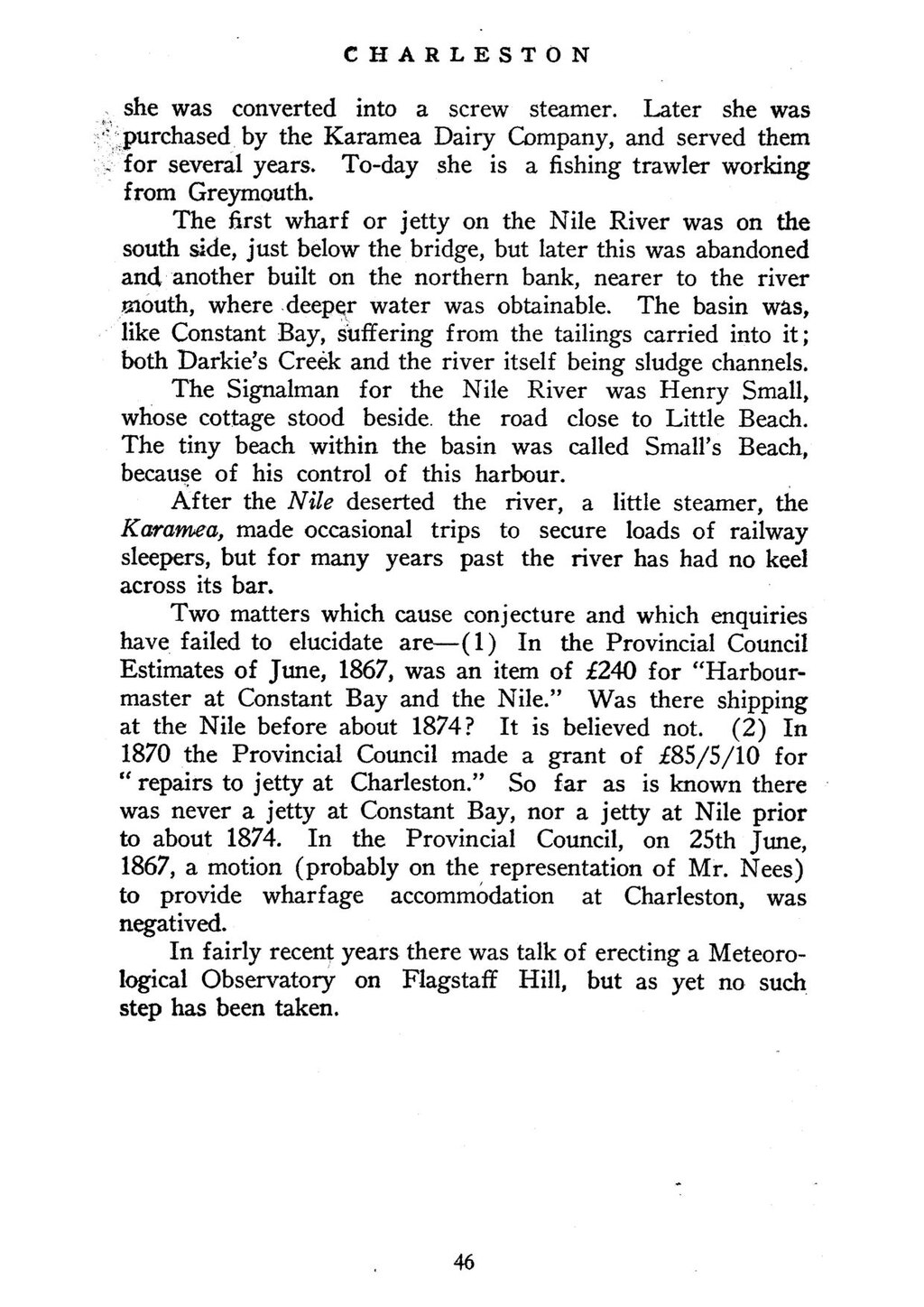CHARLESTON
she was converted into a screw steamer. Later she was purchased by the Karamea Dairy Company, and served them for several years. To-day she is a fishing trawler working from Greymouth.
The first wharf or jetty on the Nile River was on the south side, just below the bridge, but later this was abandoned and another built on the northern bank, nearer to the river mouth, where deeper water was obtainable. The basin was, like Constant Bay, suffering from the tailings carried into it; both Darkie’s Creek and the river itself being sludge channels.
The Signalman for the Nile River was Henry Small, whose cottage stood beside the road close to Little Beach. The tiny beach within the basin was called Small’s Beach, because of his control of this harbour.
After the Nile deserted the river, a little steamer, the Karamea, made occasional trips to secure loads of railway sleepers, but for many years past the river has had no keel across its bar.
Two matters which cause conjecture and which enquiries have failed to elucidate are—(1) In the Provincial Council Estimates of June, 1867, was an item of £240 for “Harbourmaster at Constant Bay and the Nile.” Was there shipping at the Nile before about 1874? It is believed not. (2) In 1870 the Provincial Council made a grant of £85/5/10 for “repairs to jetty at Charleston.” So far as is known there was never a jetty at Constant Bay, nor a jetty at Nile prior to about 1874. In the Provincial Council, on 25th June, 1867, a motion (probably on the representation of Mr. Nees) to provide wharfage accommodation at Charleston, was negatived.
In fairly recent years there was talk of erecting a Meteorological Observatory on Flagstaff Hill, but as yet no such step has been taken.
46
